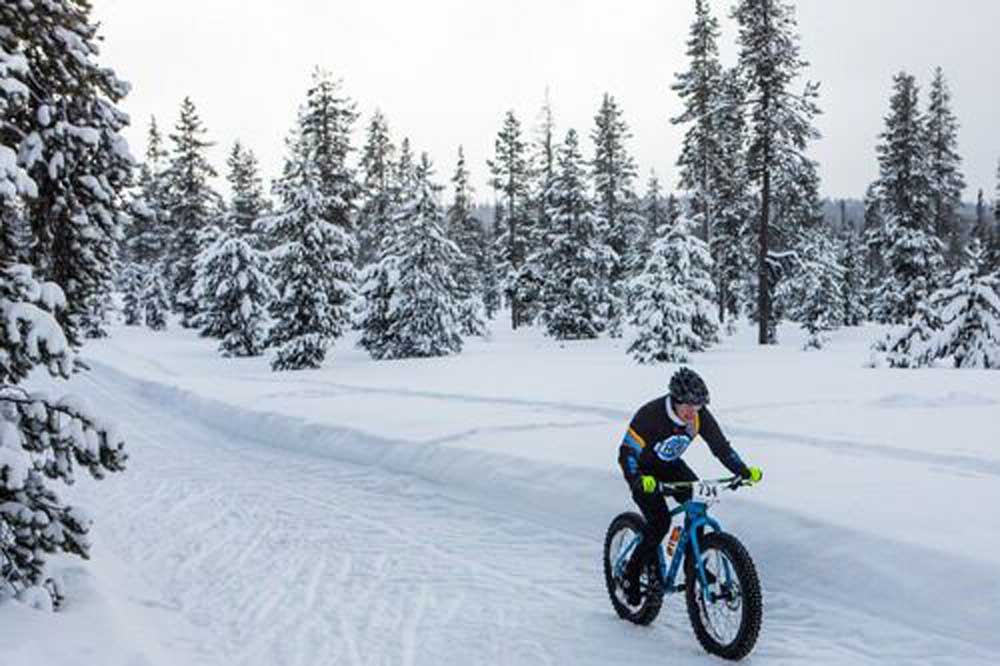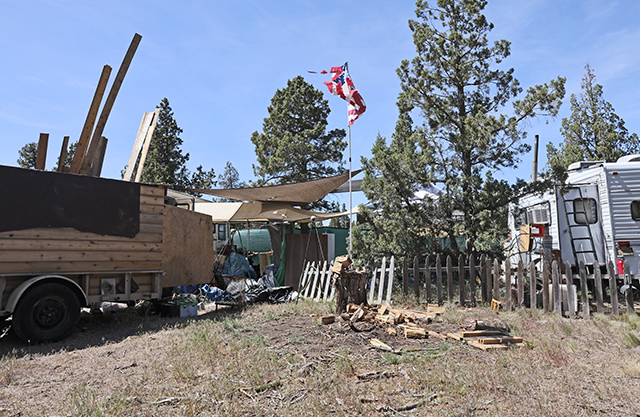Fatbiking season is almost here
Published 3:00 am Friday, October 16, 2020

- Tyler Miller nears the finish line on his way to a win in the inaugural fat bike racing during the Great Nordeen Ski and Fat Bike Race from Mt. Bachelor to Wanoga Sno-park in 2016.
When the weather turns and the snow starts to pile up on the ground, many mountain bikers will stash away their dusty bikes and bust out the skis and snowboards.
For the mountain bikers that still need their biking fix even in the winter months, the rise of fatbiking helps itch the scratch.
“There are a lot of people who are like ‘oh I can keep mountain biking?’” said Gary Meyer, the winter trail steward of the Central Oregon Trail Association.
Fatbikes are exactly like the name. A slightly larger framed bike with thick tires that can be as wide as 5 inches to cruise along softer terrain, like sand and snow, which would otherwise be challenging to maneuver around on an ordinary mountain bike.
“In Bend, we tend to think of fatbikes as snow bikes because a regular bicycle doesn’t fare too well in the snow,” Robert Rekward, one of the partners of Bend Trails. “The tire size is the biggest distinction, everything is upsized on the bike generally a fatbike.”
At Pine Mountain Sports, which rents fatbikes, the winter months are the most common times people rent. At the end of the winter season, the bikes that were rented out are sold, then another batch of bikes is brought for the next season.
When it comes to fatbiking, the width of the tire (as well as the tire’s pressure) can be the difference between staying atop the snow and sinking down and getting stuck.
“The bigger the better, if you can get it up to 5 inches (wide) it is better in my opinion for the snow that we have here,” Rekward said.
Meyer has seen the rise of fatbiking over the past decade. He got his first wide rider in 2011 and for the next couple of years, he could count the number of others with fatbikes on his two hands.
But as more and more people began to take to the sport in the following years, finding places to ride became a challenge. Without trails specifically tailored for fatbikes, riders shared trails with snowmobilers and nordic skiers.
“At that point, I started pursuing the forest service for the possibility of having trails that the fat bikes could ride on,” he said.
Now there are over 10 miles (four more pending) of groomed trails that have about a 28-inch wide thread designed to accommodate the girthy tires.
“From there it exploded,” Meyer said, “to not only people in town but now it is to the point where we are meeting people from all over on the trails who have traveled from all over to ski and ride our fatbike trails.”
The permit for fat-tire season paths are groomed starting on Dec. 1 (or when there is at least two feet of snow) and last through the end of March. Dutchman Flat Sno-park and Phil’s Trail Network are also places where the fatbiking is common.
While fatbiking allows for the mountain biking year-round, due to the texture of snow, it is not as extreme as its dirt counterpart.
“It is the typical experience, but not super steep stuff because it is too difficult to climb in snow,” Meyer said. “But it is still the typical mountain biking of twisting and turning through the trees.”






